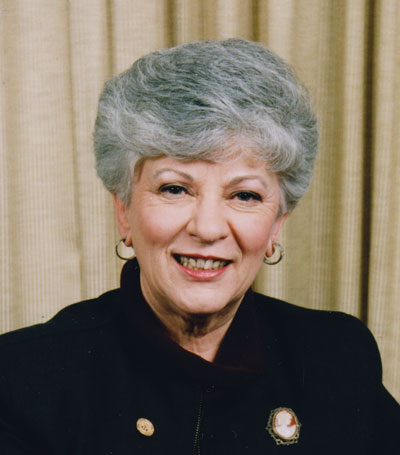
Collaboration Between DCs and Family Physicians
By Maria DiDanieli
Features Collaboration ProfessionMaria DiDanieli in conversation with Dr. Bob Haig, Dr. Candice Gibbs and Jan Kasperski
Maria DiDanieli in conversation with Dr. Bob Haig, Dr. Candice Gibbs and Jan Kasperski
 |
|
| Dr. Bob Haig is the CEO of the Ontario Chiropractic Association. |
|
 |
|
| Dr. Candice Gibbs is a chiropractor at HealthSense Medical in Oakville, Ontario. |
|
 |
|
| Jan Kasperski RN, MHSc, CHE is CEO for the Ontario College of Family Physicians. Advertisement
|
The profession of chiropractic has made impressive strides in establishing collaborative relationships with other disciplines in clinical practice, research and education. Most recently, a pilot study in Ontario, involving family physicians and chiropractors, added to this momentum. The study demonstrated that there is a very real interest, on the part family physicians as well as patients, in adopting a collaborative approach with chiropractors to streamline and enhance treatment strategies for low back pain (LBP).
According to the Ontario Chiropractic Association (OCA), “Low back pain is a major health issue in Ontario. It affects 84 per cent of the working population at some point in their life and is second only to the common cold as a cause of lost work time.”
The OCA commissioned surveys of patients and family physicians and also carried out a pilot test of the “Consulting Chiropractor” model in primary care. This latter initiative is funded by the Ministry of Health and Long Term Care.
In this article, OCA chief executive officer Dr. Bob Haig, along with project participant Dr. Candice Gibbs and Ontario College of Family Physicians chief executive officer Jan Kasperski, will outline details of the study and discuss some of the results with respect to patient satisfaction, treatment planning, practitioner experience and implementation.
SURVEYING FAMILY PHYSICIANS AND MEMBERS OF THE PUBLIC
The OCA conducted two separate studies, one with Ontario residents and one with Ontario family physicians, to gauge attitudes towards using other health-care providers, including chiropractors, as part of a multidisciplinary team to manage LBP. The physician study was completed online from April 26, 2012, to May 7, 2012, using Environics Research Group’s online physician panel. A total of 100 general practitioners/family physicians from Ontario participated in the survey. A probability sample of the same size would yield a margin of error of ±9.76 per cent, 19 times out of 20. The Ontario resident survey was completed online from April 25, 2012, to May 7, 2012, using Environics Research Group’s online panel. A total of 1,231 Ontario residents participated in the study. A probability sample of the same size would yield a margin of error of ±2.79 per cent, 19 times out of 20.
Dr. Bob Haig tells Canadian Chiropractor: “The OCA commissioned the Environics Research Group to conduct market research of both physicians and Ontario residents. All physicians were screened to ensure that they saw at least 50 patients in an average week. Ontario residents and physicians were not limited to any specific areas of the province – all participants came from a variety of geographical areas and demographic profiles.”
The OCA has reported that the survey shows the vast majority (93 per cent) of family physicians frequently treat patients with low back pain and more than half (55 per cent) find it challenging to treat these patients on their own. Three-quarters (75 per cent) say they think their patients suffering from low back pain could benefit from treatment options offered by other health-care professionals.
Three quarters (74 per cent) of residents surveyed indicated they felt that if professionals such as chiropractors were used more in teams with family physicians, this would be a better use of health-care dollars.
THE CONSULTING PROFILE PILOT PROJECT
“The objective of the pilot project was to test the feasibility, acceptability and value of this model of care in the Ontario context,” continues Dr. Haig. “With the exception of one site, the DCs were not co-located with the MDs prior to the project.”
Jan Kasperski adds, “Many of the family physicians who participated in the project were already fairly engaged with chiropractors in their communities, though, and already had an appreciation for their services.”
“For a six-month duration,” Dr. Haig explains, “the chiropractors assessed patients in the physician’s office two half-days a month. Acute, recurrent or chronic LBP patients were referred to the assessment clinic by the physicians and the chiropractor performed an assessment of approximately 30 minutes in length. The assessment clinic included a thorough, guideline-driven assessment and a patient education component.”
Dr. Candice Gibbs was the one chiropractor who was already co-located with physicians and health care workers of other disciplines prior to the study. “I’ve worked in this environment for more than four years,” she tells Canadian Chiropractor, “and we already have an established working relationship. We utilize the same electronic medical records (EMR) system allowing for easy and effective communication when dealing with mutual patients.
“For this study, we were able to see the patients before a referral for advanced imaging and medical specialists, and often, the patient could be managed effectively with conservative care. The importance of physical activity was central in many cases. Having the time to spend with the patient to walk through the guidelines was paramount and resulted in strong patient satisfaction and provider value”.
“Following the assessment, I would connect with the family physician to share my findings and discuss the patient care plan. At this point, having a community network allowed us to make recommendations for conservative treatment, if appropriate, from providers we know and trust. At the end of the session the patient would complete an evaluation form, on which they could give their impressions of their experience with this model.”
RESULTS, REACTIONS AND RECOMMENDATIONS
Dr. Gibbs notes that the patients’ evaluations forms demonstrated a 95 per cent satisfaction rate with the collaborative consultation model.
“Patients liked that they had time with the chiropractors,” she explains. “Family physicians are very busy and the DC was able to take time to talk and explain concepts to the patient. For instance, sometimes MRIs are provided to patients, for a variety of reasons, that they don’t really need. Having a chiropractor there to explain to the patients why, given their findings, an MRI may not tell us anything that we didn’t already know is very helpful to both the patient and the family physician.”
Dr. Haig expands on this: “Chronic recurrent LBP patients who do not respond to usual physician care are a particular challenge for both physicians and the health-care system and are cited as the most common reason for referrals to orthopedic surgeons and neurosurgeons.1 The vast majority of patients referred for specialist medical consultation receive advanced imaging – MRI – prior to the consultation. However, less than 10 per cent of patients referred by primary care physicians to spine surgeons are surgical candidates.2 This means that most of these MRIs were not required. Those non-surgical patients are generally referred back to the family doctor.
“Wait-times to see a spine surgeon are among the highest in Canada (average waiting time is more than seven months).3 But, evidence suggests that as many as 90 per cent of patients who are referred to the surgeon would not benefit from surgical care. Chiropractors have a valuable role to play in effective primary care triaging of LBP patients and can reduce morbidity related to prolonged waiting times and optimize use of limited resources.”
Jan Kasperski adds, “This consultation model allows the patient to bypass the long wait times and make important decisions regarding referral and treatment strategies right in the family physician’s office. Evidence suggests that the sooner an intervention is made available, the better the prognosis for a speedier recovery – we are turning many acute situations into chronic problems as a result of long delays for the proper care. This type of collaboration makes the best use of resources within the community.”
“As well,” says Dr. Gibbs, “the MDs seemed to appreciate the knowledge transfer between both the MD and the DCs. Chiropractors were able to demonstrate assessment techniques, while MD’s were able to utilize information on pharmacological therapies and treatment options. This cooperation between parties reinforced the DCs’ capabilities with the assessment techniques to the medical doctors.”
“This project met the pre-pilot expectation,” concludes Dr. Haig, “demonstrating chiropractors’ ability to contribute positively to the care for patients with LBP in physician primary care settings, and had both high physician and patient satisfaction. This project was not designed as a treatment model and therefore, there were some recommendations to include that component in future models.”
WHY THESE RESULTS ARE SIGNIFICANT FOR DCs
“This project highlights the important contribution that chiropractors can make in a collaborative primary care mode,” says Dr. Haig. “It has been made explicit by the Government of Ontario, and other stakeholders, that interprofessional collaboration (IPC) is a best practice approach to improve access to primary, secondary and continuing care. IPC enables the patient and providers to be partners in care delivery, with the most appropriate health professional providing the services to meet their health-care needs.
“In response to this, the OCA is engaged in a number of initiatives to explore and demonstrate the value of innovative IPC models of care and encourages chiropractors to be active participants in the rising trend of IPC. Patient care is enhanced through participatory and co-ordinated collaboration. DCs should work to strengthen relationships with family physicians and other health providers by honing their interprofessional communication approaches.”
STRATEGIES FOR ENHANCING IPC COMMUNICATION
Dr. Gibbs notes, “When a DC has seen a patient who has been referred to him/her from a medical doctor or other care giver, it is a good idea to send back a clinical note. This can help build your practice through increasing the number of shared care patients.”
The OCA explains that surveys conducted of physicians highlight the fact they rarely receive any communication following shared patient care from chiropractors. Some of the potential challenges of sharing patient information originate with how the information is captured in patient charts and clinical/consultation notes.
Dr. Haig mentions that the OCA has developed a clinical consultation note form for DCs to use when communicating with other caregivers.
“OCA members are encouraged to use this form to send clinical/consultation notes back to the physician, at a minimum, following the first initial patient visit,” he says. “The form is available for DCs, including those in other provinces who may be interested in viewing it, on www.chiropractic.on.ca. It aims at creating common terminology on charting that is aligned to the data elements that are most relevant to the physician.”
Dr. Gibbs says, “DCs can also hold workshops or rounds or offer to organize a working lunch with family physicians in their communities. This can facilitate discussions between different disciplines.”
On behalf of Ontario’s family physicians, Jan Kasperski concludes, “It would be ideal to adopt the collaborative consultation and care model throughout the province. This would be a wonderful opportunity for caregivers to develop collegial relationships and support each other through good collaboration. Management of LPB patients by family doctors supported by the expertise of various health-care professionals, such as chiropractors and physiotherapists, is a solution that will ensure Ontarians with back pain will receive the best care possible.”
REFERENCES
- ICES Investigative Report. Investigation of acute lower back pain in Ontario: Are guidelines being followed? April 2004 in Atlas SJ, Deyo RA. Evaluating and managing acute LBP in the primary care setting. Journal of Gen Intern Med, 2001; vol 16: 120-31.
- Iron K, Jaakkimainen L, et al. Investigation of acute lower back pain in Ontario: Are guidelines being followed? ICES, Toronto, Ontario, 2004.
- Walker M, Ramsay C, Wrona D. Waiting your turn: hospital waiting lists in Canada. 16th ed. Toronto (ON): Frasier Institute, 2006.
Print this page